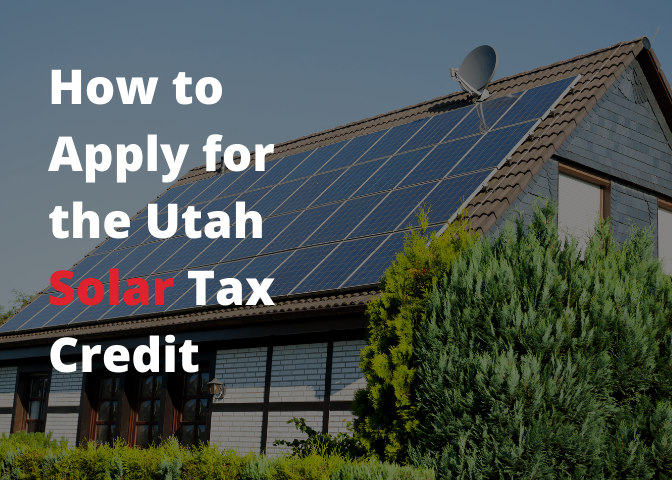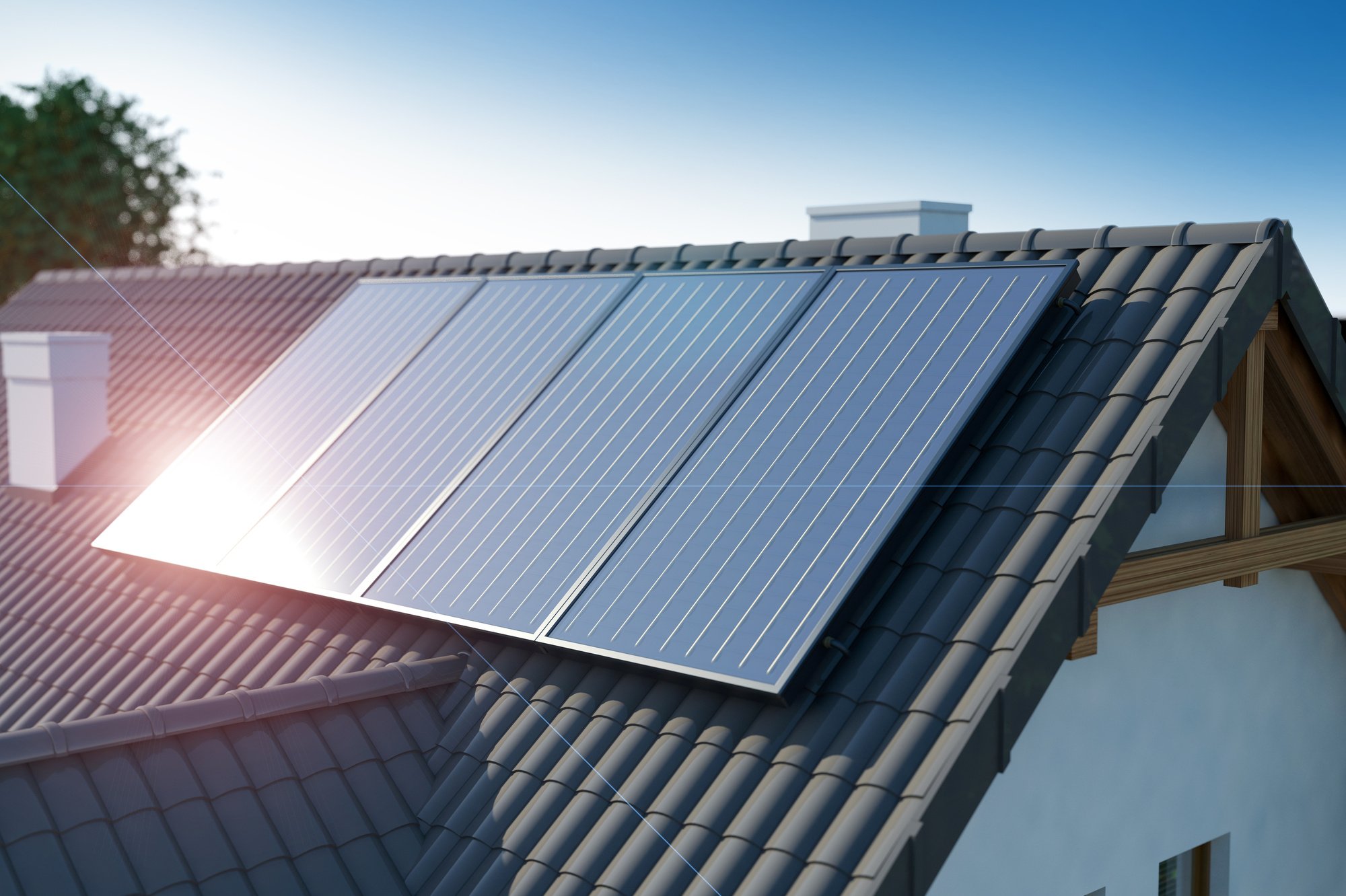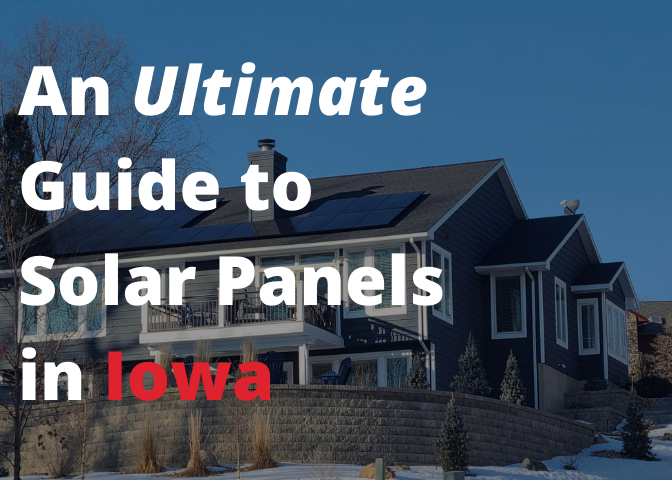How to Apply for the Utah Solar Tax Credit

Solar energy is an abundant, clean, and renewable energy resource. As we continue to shift away from non-renewable energy sources such as coal and oil, solar energy is expected to play a leading role in powering our homes and cities. Every month in the United States, we are seeing thousands of homeowners make the switch to solar energy by installing solar panels on their properties.
The good news is that solar energy has never been more affordable. Today's installation prices are around 70% lower than just a decade ago. In addition to the falling upfront cost of installation, both the Utah solar tax credit and the federal solar tax credit can be utilized by homeowners in the state.
If you are a Utah homeowner considering installing solar panels on your property, then this blog post is for you. Here we will explain exactly what both of these solar tax credits are and how you can apply for them. We will also look at the average cost of installing solar panels in Utah and the potential energy cost savings over the 25-plus year lifespan of the solar system.
What Is the Utah Tax Credit for Solar Panels?
We all know that Utah is a sun-kissed state with approximately 238 sunny days per year. This isn't just good news for those interested in working on their tans; it means that the state is well-suited to harnessing the power of the sun via solar panels.
The duel availability of both state and federal solar tax credits means that right now is the best time to make the switch to solar. In 2022, the Utah residential solar tax credit stands at 25 percent of the eligible system cost or $800, whichever is less.
This rate is gradually decreasing. In 2020, the maximum tax credit was $1,600 while in 2021 the maximum credit was $1,200. In 2023, the maximum credit is again going to get reduced, this time to $400. From 2024, there will not be a residential solar tax credit in Utah.
For those wondering, there is also a residential tax credit available for other renewable energy technologies (such as wind, biomass, geothermal, and hydro), which are grouped together within a separate tax credit.
What Is the Utah Solar Tax Credit Application Process Like?
In this section, we will highlight 5 different steps that you need to take in order to receive the residential solar tax credit in Utah.
1. Install Your Solar Panel System
The first step is to install your solar panel system. We recommend that you contact the expert team at Skyline Solar, the premier solar provider in Utah, to get started. We guarantee that your solar panel project will be completed on time—that means producing electricity within just 120 days.
Every home is different and it's important to understand the most suitable system size for your needs. The size of the property, the number of people living at the property, and your current energy usage will all play a role in determining the right size.
2. Create Your GOED Account
GOED stands for the Governor’s Office of Energy Development, where you will have to create an account in order to file for your solar tax credit. Rest assured that our team will be happy to help you with this process.
3. Complete Your Application
In order to properly complete your application for the solar tax credit, there are a number of documents that you must submit. These documents include:
- Invoice for the solar panel system installation
- Agreement letter for net metering and interconnection
- Photographs of the installed solar panel system
- Plans of the specific solar panel system
Before we proceed, let's briefly highlight what net metering is. Effectively, it is the process of selling excess electricity that your panels create (and which you don't require) to the main grid. In exchange, you will receive credits that can be used to offset the cost of any grid electricity that you use.
When completing your application, there is a $15 application fee. Households will not receive their TC-40E tax form until the fee has been paid.
4. Receive Your TC-40E Tax Form
The next step is to receive the aforementioned TC-40E tax form. It may take several weeks for your application to be processed and approved, depending on the time of year.
You don't have to do anything with this form other than save it should you be audited. In that case, you would need to present it to the Utah State Tax Commission.
5. Claim the Renewable Residential Energy System Credit
When you are filing your Utah income tax, code 21 will allow you to the Renewable Residential Energy System Credit. Again, you do not need to submit your TC-40E form when filing your state taxes.
What Is the Federal Tax Credit for Solar Panels?
In addition to the state solar tax credit in Utah, homeowners may be eligible for the federal solar tax credit. Combined, these tax credits can help to significantly reduce the upfront cost of installing a solar panel system. This tax credit is part of the federal government's push to increase uptake in solar energy systems.
As with the Utah solar tax credit, the federal version's rate has been gradually reducing in recent years. Currently, as of 2022, the tax credit stands at 26%. The tax credit had previously been as high as 30%, while this rate is due to further decrease to 22% in 2023.
The rate had initially been pegged to drop to 22% from 2022, however new legislation was introduced to increase the time period for the 26% rate. Unless further legislation is brought in, the federal solar tax credit to due to expire at the end of 2023. Therefore, now is the best time to act in order to reduce the cost of solar panel installation.
What Is the Federal Solar Tax Credit Application Process Like?
Here, we will explain the processing of applying for and receiving the federal solar tax credit in Utah.
Check That You Are Eligible
To be eligible for the federal solar tax credit, the solar system must have been installed at either your primary or secondary residence. It is also necessary to own the solar system outright. In the case where you are leasing the system, the tax credit will be available for the installation company, not you.
Also, note that the solar system must be either new or being used for the first time. Only the original installation is applicable for the federal solar tax credit.
Understand What Expenses Are Included
The following expenses are covered under the tax credit:
- Solar panels
- Contractor labor costs
- Balance-of-system equipment
- Energy storage devices
- Sales tax on eligible expenses
Filling Our IRS Form 5695
To claim your federal tax credit, you are required to complete IRS Form 5695 when lodging your tax return. This form calculates tax credits for a range of different residential energy improvements, including solar energy systems.
As an example, we will assume that the gross cost of your solar system is $25,000. This is defined as qualified solar electric property costs. This means that you will be eligible for a $6,500 tax credit.
You will then have to determine if you have enough tax liability to get the full 26% credit in one year.
Filling Out Form IRS 1040
Once you have calculated the amount that you are eligible for, you will then enter it on form 1040. The amount of renewable energy credit that you are entitled to must be added to Schedule 3 and then to the IRS Form 1040. You will then be eligible for your federal solar tax credit.
How Much Does a Solar System Cost in Utah?
Now that we have highlighted the process of claiming both the state and federal solar tax credits in Utah, let's look at the typical installation cost of a solar system.
In Utah, the average cost of installing solar panels in 2022 costs between $10,617 and $12,977 (after applying the federal tax credit), with an average cost per watt of $2.39 to $2.92. By comparison, the national average price of residential solar power systems in the US is $3.00 per watt.
Let's take Salt Lake County as an example. The recommended system size for the average property here is 6.7 kW with an average installation cost of between $12,907 and $15,775 (after applying the federal tax credit)
The net profit (which refers to the savings minus the system cost) would be between $18,780 and $22,954. There is an estimated payback period of 10.6 to12.9 years. These numbers indicate the value of installing solar panels on your property in Utah, with the potential to save many thousands of dollars on your home's energy bills.
What Determines the Cost of Solar Panels?
The more electricity your home uses, the more solar panels that will be required to cover its energy needs. While the per-watt cost of solar panels decreases with a larger system, the upfront costs will be greater than installing a smaller system.
The type of solar panels you buy will also affect the cost. There are three main types of solar panels: Tier 1, Tier 2, and Tier 3. While Tier 1 solar panels are more expensive than the other options, they are of the highest quality and have a lower degradation rate.
The annual degradation rate of Tier 1 solar panels is just 0.30% compared to 0.80% for Tier 3. After 25 years, Tier 1 solar panels will maintain more than 93% of their original output, compared to around 82% for Tier 3 panels.
What Are the Benefits of Installing Solar Panels in Utah in 2022?
The primary benefit of installing a residential solar panel system on your property in Utah is the potential cost savings. As we have noted, the lifespan of a solar panel system is in excess of 25 years, making it an excellent and cost-effective long-term investment.
By installing your solar panel system this year, you will be able to make the most of both the Utah solar tax credit and the federal solar tax credit. There are a number of other benefits of installing solar panels, including:
Boost Your Property's Value
As per the Office of Energy Efficiency & Renewable Energy, installing a solar panel system will likely increase your property value. Solar panels are seen as a home upgrade, similar to a finished basement or a renovated kitchen. There is evidence to show that homebuyers pay a premium of around $15,000 for a home with an average-sized solar system.
Protect the Environment
Given that solar energy is clean and renewable, it comes with a host of environmental benefits. These include:
- Reduces air pollution
- Reduces water usage
- Helps to tackle climate change
- Reduces dependence on non-renewable energy
- Improves humanity's health
Solar energy does not produce any greenhouse gases, in stark contrast to non-renewable energy options such as coal and oil.
Pair With an Electric Vehicle
Along with the increased public interest in solar energy to power homes, electric vehicles have steadily become more mainstream. If you already own or are considering purchasing an electric vehicle, then it is a great idea to pair it with solar panels.
The reason is that charging your electric vehicle with solar energy is considerably cheaper than using electricity from the main grid or a public charging point.
Make the Most of Your Solar Panel Installation
By installing solar panels on your property, you could save thousands of dollars over the lifespan of the system. By utilizing the currently available Utah solar tax credit and the federal solar tax credit, you can reduce the upfront costs.
Here at Skyline Solar, we are your premier choice for solar installation in Utah and across the Midwest. Contact our team today to learn more and get started.



